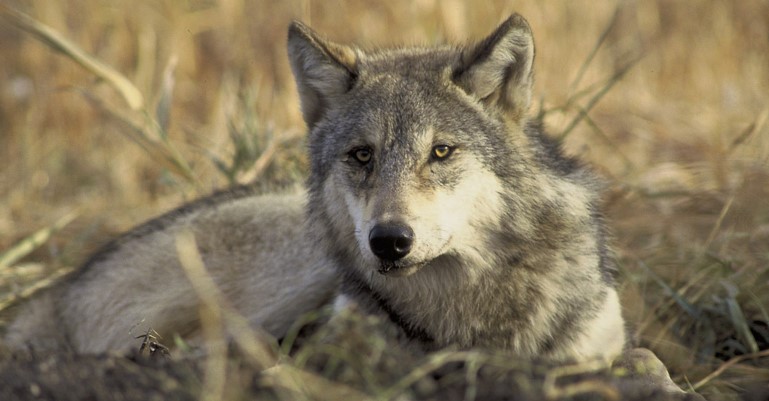Court returns gray wolf to endangered species list
Ag groups see gray wolf ruling blow to Endangered Species Act goals.

Senior U.S. District Court Judge Jeffrey White ruled that the U.S. Fish and Wildlife Service prematurely removed federal Endangered Species Act protections for gray wolves in most of the lower 48 states in recent years. The decision will restore protections for thousands of wolves, however, ranchers say the action is not driven by the data showing wolves have exceeded recovery goals.
Protections were previously removed for wolves in the northern Rocky Mountains and in November 2020, FWS announced its decision to remove federal protections for gray wolves throughout the remaining lower 48 states. The decision, which took effect on Jan. 4, 2021, affected gray wolves in at least 44 states, most prominently in the western Great Lakes, the central Rockies and Pacific Coast.
Zippy Duvall, president of the American Farm Bureau Federation, says AFBF is extremely disappointed in the ruling to return the gray wolf to the endangered species list. “The gray wolf exceeded recovery goals and should be celebrated as an Endangered Species Act success story. The ESA is intended to promote species recovery and delisting, not to impose permanent protected status for animals that are now thriving. Today’s ruling ignored ESA goals and threatens recovery efforts for other animals,” he says.
Since being listed under the ESA in 1974, the gray wolf population has seen tremendous recovery, exceeding recovery goals by 300%.
“It's disappointing that environmental activism carried more weight than science in this case. Rather than ruling on due process and adherence to recovery criterion, Judge White chose to remand the rule and undermine one of the most successful ESA recovery stories in United States history,” says NCBA Executive Director of Natural Resources and Public Lands Council Executive Director Kaitlynn Glover. “This is just another attempt by activist groups to ignore the facts and rewrite the history of gray wolf recovery in the U.S.”
“ESA should not be used as a permanent management too,” Glover ads. “Today’s decision conflicts with the intended purpose of the Act and removes critical management tools for wolves that pose a tremendous threat to farmers and ranchers, rural economies and vital land and natural resource conservation.”
Coexistence between ag and wolves encouraged
As wolves are top predators, their expansion will have major ecological benefits, according to Defenders of Wildlife. Predation by wolves regulates deer and elk populations, protecting plants from over-browsing, thereby improving habitats for other wildlife such as songbirds, beaver and fish. Wolves also promote the health of elk and deer herds by preying on sick and diseased animals.
“Today’s ruling is a significant victory for gray wolves and for all those who value nature and the public’s role in protecting these amazing creatures,” says Jamie Rappaport Clark, CEO and president at Defenders of Wildlife. “Restoring federal protections means that these vitally important animals will receive the necessary support to recover and thrive in the years ahead.”
Despite these renewed protections, Defenders of Wildlife will continue to work with livestock producers, ranchers and others sharing the landscape with wolves to implement strategies to reduce wolf-livestock conflicts. For decades, Defenders has engaged in collaborative relationships with tribal partners, wildlife biologists, and ranchers to promote coexistence programs that help protect wolves and support agricultural goals. Coexistence measures – like range riders, electric fencing and strategic grazing practices – are essential tools in protecting and restoring wolves.
NCBA and PLC explain cattle and sheep producers experience, daily, the consequences of gray wolf overpopulation.
“One year, I lost 26 calves due to gray wolf attacks,” says Minnesota cattleman Joe Wilebski. “As a producer, my top priority is the health and safety of my livestock. The consequences of gray wolf attacks go far beyond the immediate loss of livestock. When wolves attack animals, even if they aren’t killed, it causes long-term effects on their overall health and well-being.”
Across the country, increased attacks on livestock are threatening the viability of family-owned farms and ranches. NCBA and PLC say they will continue to fight for science-based decisions regarding ESA listing and look toward the Biden administration to do the same.
In May 2021, NCBA and PLC led a coalition of agricultural groups, including the American Sheep Industry Association, American Farm Bureau Federation, and the American Forest Resource Council, to file an amicus brief in defense of delisting the gray wolf under the Endangered Species Act. Further, NCBA and PLC appealed the Ninth Circuit’s denial of intervention.
“Farmers and ranchers share the goal of a healthy and thriving ecosystem. Management of the fully recovered gray wolf should be overseen by the states, which can best determine the most appropriate course of action for each region,” Duvall says.
About the Author(s)
You May Also Like





